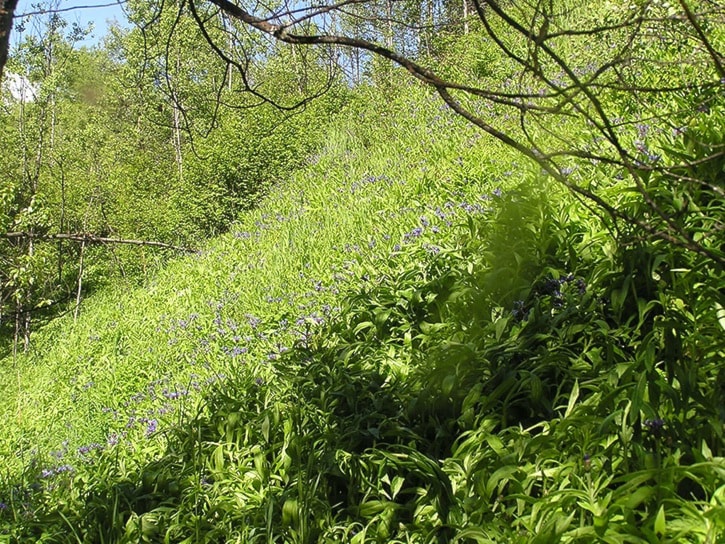June 9-15 was proclaimed as Invasive Species Week by the B.C. provincial government.
The purpose of Invasive Species Week was to promote and raise awareness of the economical and environmental damage that invasive plants and animals can cause communities.
Since 2012 the provincial government has provided the Invasive Species Council of B.C. $2.1 million to help prevent aquatic species from entering B.C., as well as to support public awareness programs.
Along with the $2.1 million provided to the Invasive Species Council of B.C., the provincial government, last month, announced that $1.6 million in invasive plant grants have been awarded to 29 regional districts, municipalities and invasive species organizations, which includes the Regional District of Bulkley-Nechako (RDBN)
That money is in an addition to the $809,000 that the Minister of Forests, Lands and Natural Resource Operations has set aside for invasive plant control and management in 2014-2015.
The RDBN has its own Invasive Plant Management Program which is administered by the regional districts' Environmental Services Department.
As well, the RDBN is a member of the Northwest Invasive Plant Council (NWIPC), which since 2005 has been conducted using a 'single agency approach.'
"Invasive plant control has been conducted using a 'single agency approach' various organizations, including the Regional District of Bulkley-Nechako, various municipalities, Ministry of Transportation and Infrastructure, Ministry of Forests, Lands and Natural Resource Operations, BC Hydro and others, contribute funding to the NWIPC," Carolynn Lane, Sustainability Assistant for the RDBN said.
"The contributed monies are managed using a partnership delivery model to achieve on the ground control of invasive plants on each jurisdiction, as well as public awareness, inventory, and assessments. On the ground treatments and inventory are conducted by contractors in each Invasive Plant Management Area."
The NWIPC covers the area from Valemount to Haida Gwaii and north to the Yukon border, excluding the Peace Region.
Invasive plant programs are designed to identify areas where invasive plant species are growing a rapidly contain and eradicate the area.
The top three invasive plant species in the Burns Lake area include mountain bluet, which is highly invasive and displaces natural vegetation, common tansy, which may be toxic to cattle and displaces natural vegetation and field scabious, which competes with forage stands and native pastures, causing decline in hay production.
The RDBN has a Landowner Rebate Program where locals can apply for a rebate on the extraction of invasive species in their home gardens.
This money is set aside by the NWIPC for each member.
The applicants jurisdiction depends on the maximum amount that they could be refunded for the cost.
Burns Lake residents can receive up to a $500 rebate if their application is accepted.
Along with concern over invasive plant species the week targeted the education of harmful aquatic invasive species.
This focused mainly on the potential to transport these species by recreational boaters.
The Invasive Species Council of B.C. programs, such as the 'Clean, Drain, Dry' program target the education of recreational boaters.
This program encourages boaters to clean, drain and dry and equipment, boats, motors, trailers, bait buckets and pets of aquatic debris before leaving a lake or body of water.
Those who fail to do so face stiff penalties.
In 2012, an amendment to the alien species regulations ensures that boaters clean all boats or related equipment to prevent the spread of species, such as quagga mussels.
Those who fail to do so face fines of up to $100,000.
Minister of Forests, Lands and Natural Resource Operations, Steve Thomson encourages British Columbians to educate themselves about these species.
"During Invasive Species Week, I encourage British Columbians to learn more about these damaging plants and animals and actions that
anyone can take to limit their spread," Thomson said, "I encourage citizens to use the Report-A-Weed app, and I encourage boat owners to ensure they 'clean, drain and dry' their boats before launching in B.C.'s lakes and rivers."
In 2012, Burns Lake had a clean station for boats that was part of a pilot program.
The station is no longer there as the focus has shifted more towards the education of local boaters to the harms of invasive species.
The Regional District of Bulkley-Nechako encourages anyone that sees invasive plants to call the Northwest Invasive Plant Council's hotline at 1-866-44WEEDS(93337).
Boaters can learn more about the Invasive Species Council of B.C.'s 'Clean, Drain, Dry' program at www.bcinvasives.ca/programs/aquatics.
